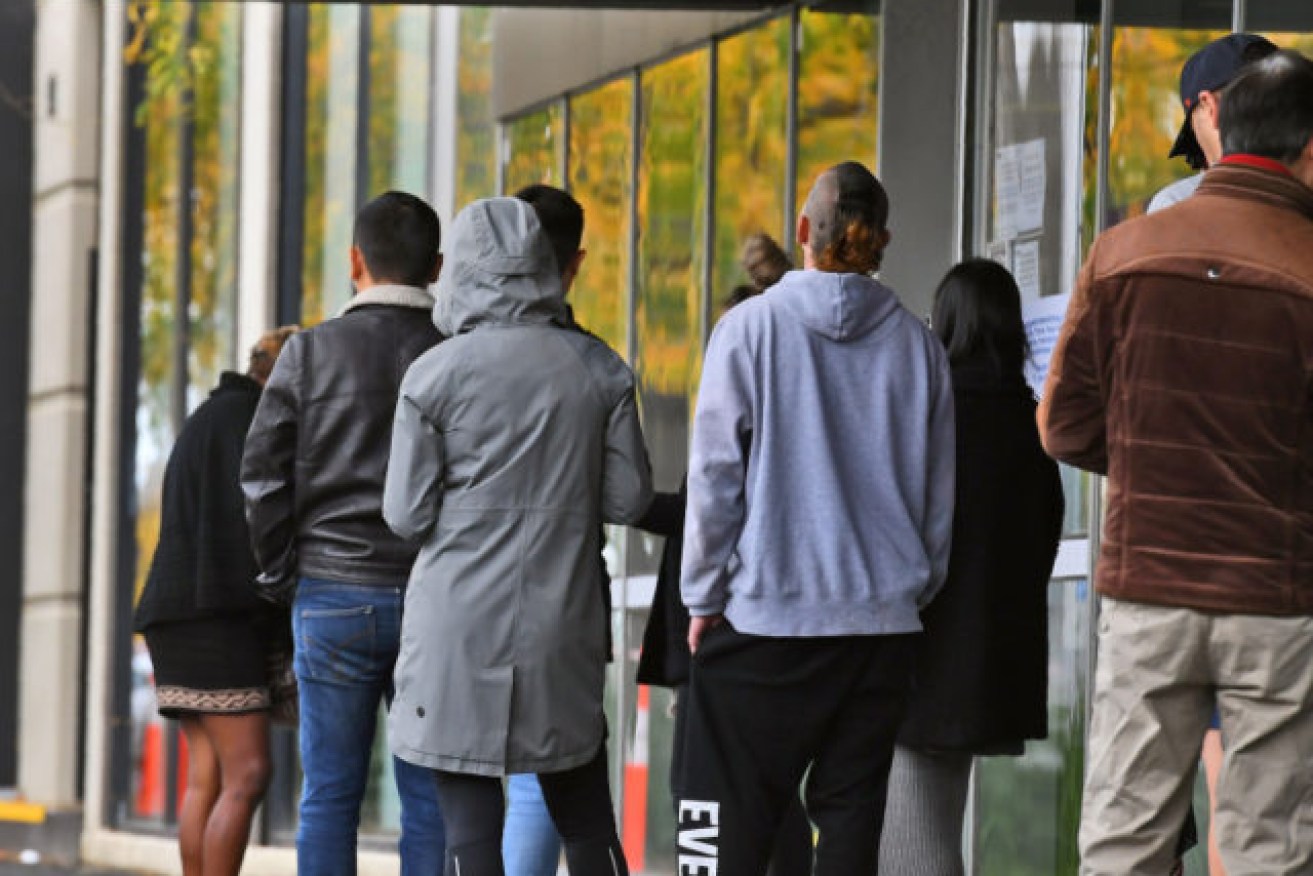‘Nasty numbers’ to come as Delta sinks the jobs market


Unemployment has fallen but economists say that hides the real pain for workers. Photo: TND
The unemployment rate fell to 4.6 per cent in July, the lowest level since late 2008 – but not even Treasurer Josh Frydenberg was celebrating.
That’s because economists fear the worst is yet to come for workers, who are clocking in far fewer hours on the job and are seeing their purchasing power stagnate heading into Christmas.
It’s all backwards. Usually when unemployment falls, economists rejoice.
But as the pandemic rages on, it is becoming clear that the unemployment rate is misleading and fails to capture the real experiences of workers.
Some economists are even suggesting that effective unemployment actually rose in July, and now matches jobs-market conditions seen in October.
“The fall in the national unemployment rate in July shouldn’t necessarily be viewed as a sign of strengthening in the labour market,” said Bjorn Jarvis, head of labour statistics at the Australian Bureau of Statistics.
“It’s another indication of the extent of reduced capacity for people to be active in the labour market in the states with the largest populations.”
In other words, fewer people were out looking for jobs. Mr Jarvis said the number of workers counted in the labour force fell by 64,000 in July across Australia’s two largest states.
‘Nasty numbers’ to come
The reality for workers with and without jobs right now is much worse than the headline jobless rate suggests.
The number of people looking for work nationwide fell by 37,000 in July as lengthy lockdowns to curb the spread of the Delta variant forced many businesses to shut down.
Meanwhile, a whopping three million hours of work were lost as 11.4 per cent of people with jobs worked zero hours amid worsening outbreaks.
And although employment levels barely moved nationally, 36,000 fewer people in NSW were employed in July – and the data only captured the first few weeks of a lockdown that will go on for months.
EY chief economist Jo Masters fears that the worst is yet to come.
“We’re in for some nasty numbers in August and September,” Ms Masters said.
She advised workers to “look past the headline numbers” in the ABS survey, which was done prior to NSW’s lockdown being tightened and before the latest Victorian outbreak triggered that state’s sixth lockdown.
“There are so many moving parts … it’s extraordinarily difficult to get a really clear-cut picture [of the jobs market],” Ms Masters told TND.

Treasurer Josh Frydenberg was not celebrating on Thursday. Photo: Twitter
Unemployment fell despite employment rising by just 2200 people in July.
Here’s why.
Deceptive numbers
The ABS only counts as unemployed those who are available to work or actively looking for a job – not the 37,000 or so who recently gave up.
The proportion of working-age adults who have jobs or are seeking one is known as the ‘participation rate’, which fell by 0.2 percentage points in July.
And because participation fell, fewer people who did not have jobs were counted in the labour force relative to those who did.
That pushed down the unemployment rate, which is just the number of people with jobs divided by the number of people in the labour force.
But this is misleading, because not looking for work during COVID-19 doesn’t necessarily reflect a desire to avoid the labour force.
In many cases, it’s about public health orders ruling lots of jobs off-limits.
Additionally, about 181,500 people worked zero hours in July because they were stood down – but they were still counted as employed.
About 116,700 of those were in NSW, the highest level since May 2020.
Meanwhile, the underemployment rate – which measures the proportion of working-age Australians who have jobs but would like to work more hours – rose 0.4 percentage points, to 8.3 per cent.
Effective unemployment spikes
Economist Saul Eslake has been trying to estimate what the unemployment rate looks like once all workers are factored into the ABS calculations.
This includes those who gave up looking for work, and also workers who are technically employed but working zero hours for economic and other reasons.
The idea is that this more accurately portrays the real experience of workers and gives us a better idea of spare capacity in the jobs market, which is important to understand how wages growth and inflation will develop. The measure is known as effective unemployment.
Mr Eslake said effective unemployment was 8 per cent in July, up about 0.9 percentage points on his estimate for June.
It’s at roughly the same level as it was in October, when Victoria was in its first extended lockdown, Mr Eslake explained.
Tweet from @JEChalmers
The reality, though, is that economists don’t really know what’s happening in the jobs market right now.
Indeed APAC economist Callam Pickering said we’ll have a better idea once jobs market data for the entire September quarter is published.
“There are some issues with measuring labour market outcomes in the middle of a pandemic,” he told The New Daily.
What we know is the number of hours worked across the economy has fallen, and 2.2 million people have applied for income support under the federal government’s latest scheme.
“There are a lot of people who are okay because there is additional government support in place, but there are always people who fall through the cracks and don’t get the same support,” Mr Pickering said.
“There are going to be some people who are really struggling.”








